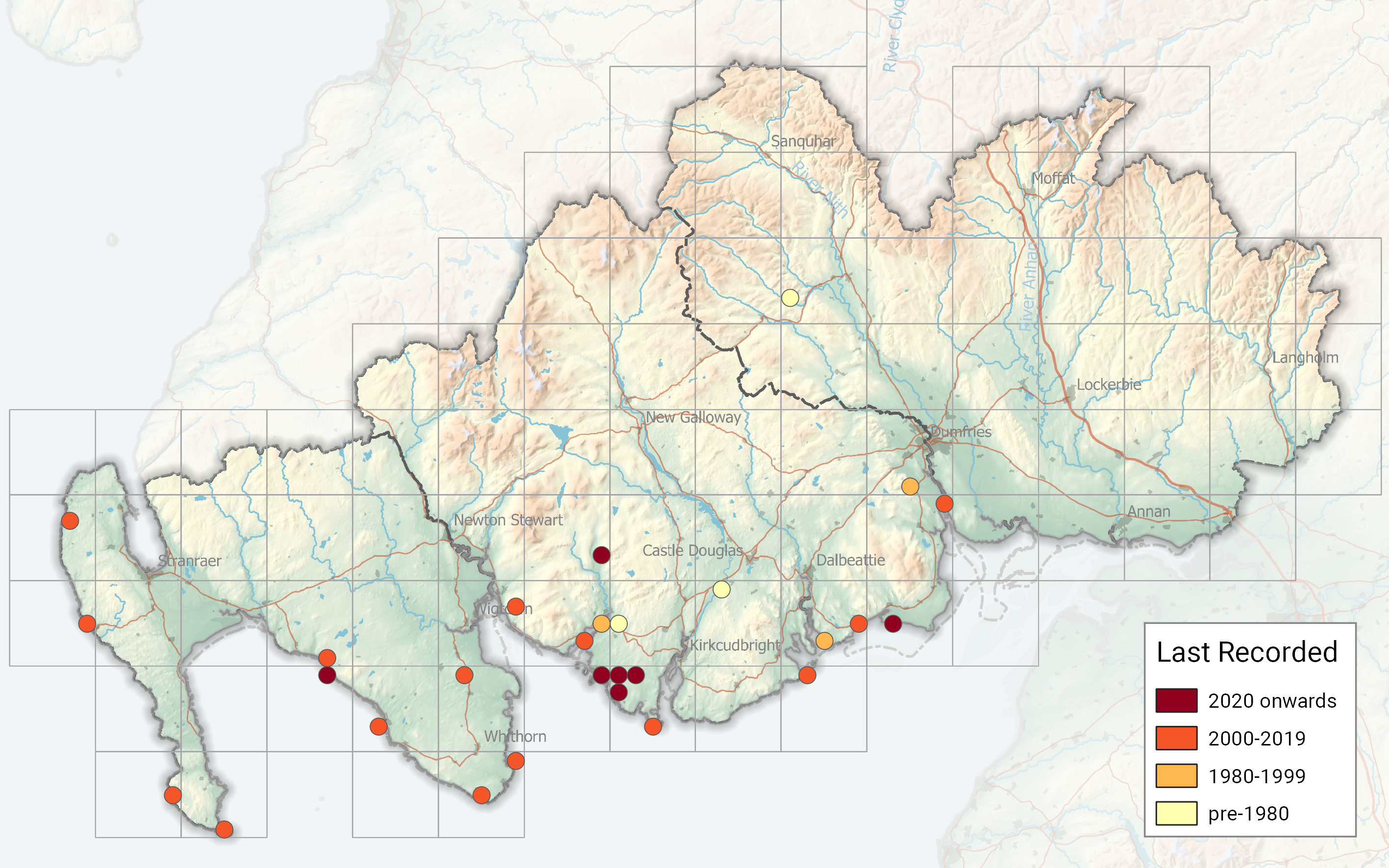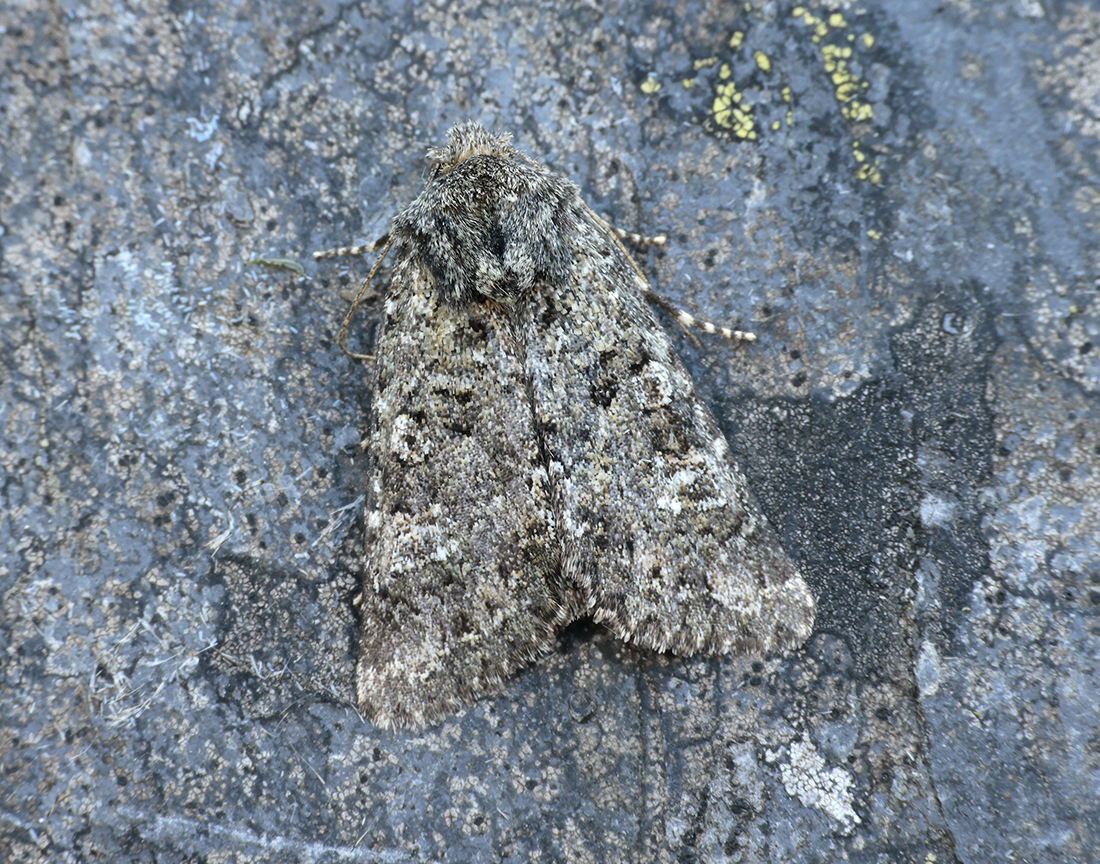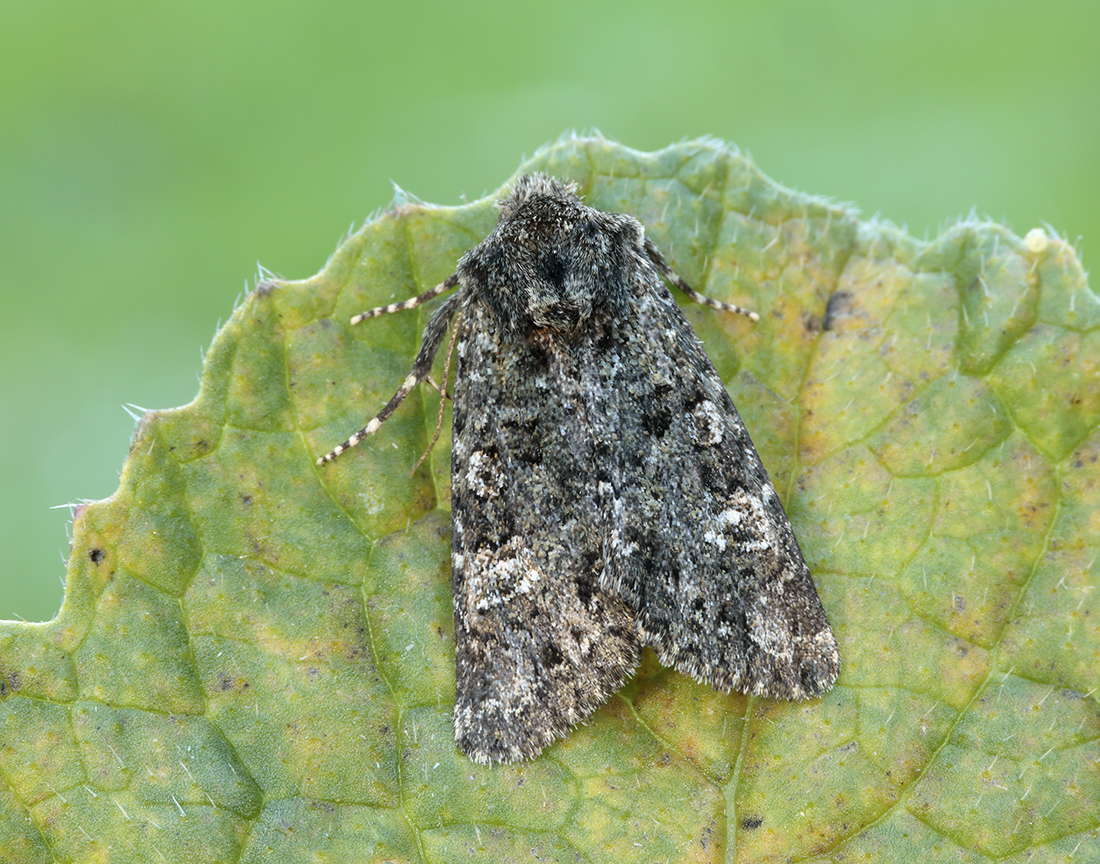Identification
Unmistakeable.
Recording Method.
Attracted to light, also comes to sugar and flowers.
Life cycle
One generation. Overwinters as a small larva in vegetation at ground level. Larvae appear October to May, feeding at night, with pupation underground.
Larval foodplants
Larvae feed on various herbaceous plants including Thrift, Sea Plantation and Biting Stonecrop.
Habitat
Mainly coastal.
History
Gordon (1913) was informed by Miss D. Jackson of one specimen caught at the Mull of Galloway Lighthouse in 1909 and another in 1910. These records for VC74 were not included in MOGBI.
Duncan & Cunningham (1952) recorded the next record which was of two caught at Tynron on 1st September 1951, being the first for Dumfriesshire (VC72) and well inland. In 1974 a male was caught at the Rothamsted station at Gatehouse-of-Fleet in mid-September, with another male at the Bridge of Dee site on 22nd September 1976. Another inland record followed in 1989 when one was caught at the Mabie Forest station in mid-September (all VC73).
1994 produced one on Rough Island (VC73). Five were then caught at the Mull of Galloway (VC74) during mid-September 1998, with one the following year in Cally Woods and 23 at Torrs Heughs, Sandyhills (VC73).
At Garheugh Cliffs (VC74) thirty were caught on 25th September 2000, and the following year a lone male was noted, while sixteen were trapped at Burrow Head (VC74) along with six at Torrs Heughs, Sandyhills in September 2003. In 2006 twenty were trapped at Meikle Ross on 23rd September 2006. While at Sandgreen one was trapped in September 2009 with another in October 2010.
See References in Glasgow Naturalist for major article by Gregory et al.









